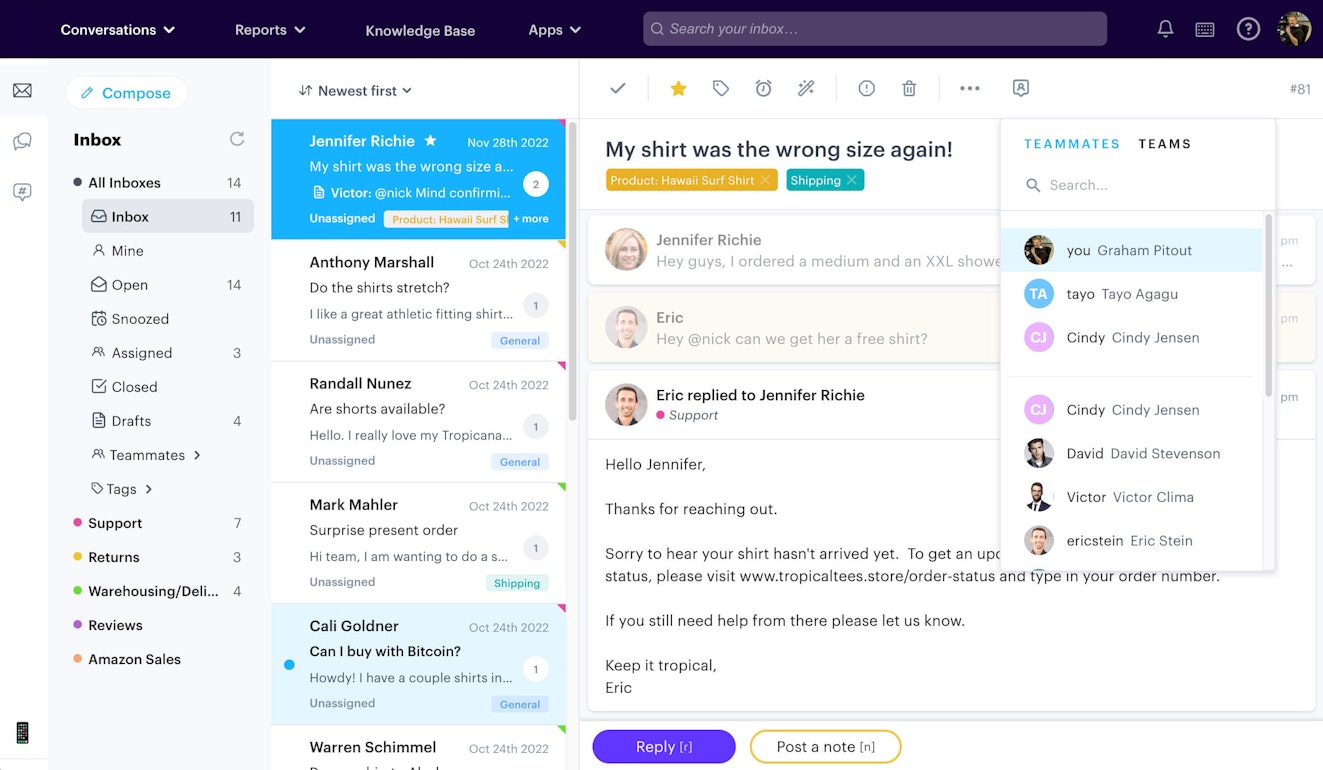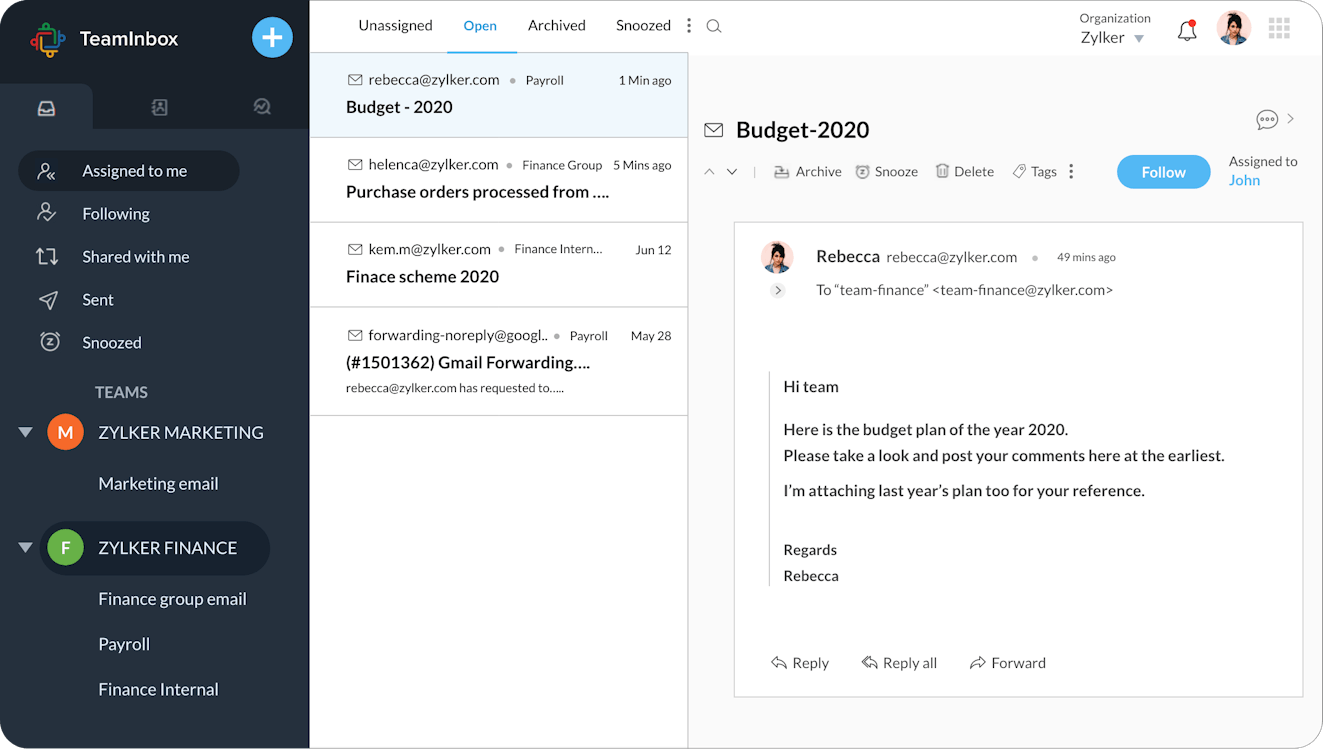If your business is like most, chances are that your team spends a lot of time responding to email. In fact, it’s estimated each person sends and receives an average of 127 business emails per day. While that number may sound large, most email clients have features like labels and filters that can help you tame your inbox on an individual level. The point where things start to get tricky is when email duties need to be shared across a team. If that sounds like your business, you may want to consider a shared inbox.
What is a shared inbox?
A shared inbox refers to an email inbox that enables multiple colleagues to access it simultaneously. While each user maintains their own personal account, they have the ability to send, read, and manage messages from specific shared mailboxes.
It’s fairly common for companies to start off managing team email by creating mailing lists that route messages to their related departments (e.g., sales@, support@, etc.) or by sharing the credentials for a dedicated email address. This works well enough when a team is small, but as your staff and email volume increase, it can become easy for messages to fall through the cracks.
The 12 best shared inbox software options for improved team collaboration
If you’re looking for a better way to manage email across your organization, here are 12 team inbox tools that can help any team provide better email support.
Help Scout
Outlook shared mailbox
Google Collaborative Inbox
Groove
Hiver
Front
Helpwise
Drag
Zoho TeamInbox
HubSpot Service Hub
Missive
Gmelius
1. Help Scout
Best shared inbox software for teams providing multi-channel support.
Help Scout's shared inbox has many features designed to make it easier for teams to stay productive, collaborate seamlessly, and deliver exceptional email support.
Reduce complexity for your audience
While some email management tools interrupt your conversations with ticket numbers and login portals, Help Scout is invisible to those who reach out for your support. All they get is a helpful response to their questions that looks just like a regular email.
Additionally, when your team picks up a conversation, they have immediate access to that sender’s full profile: what they’ve asked you before, their account history, and quick links to other internal systems.
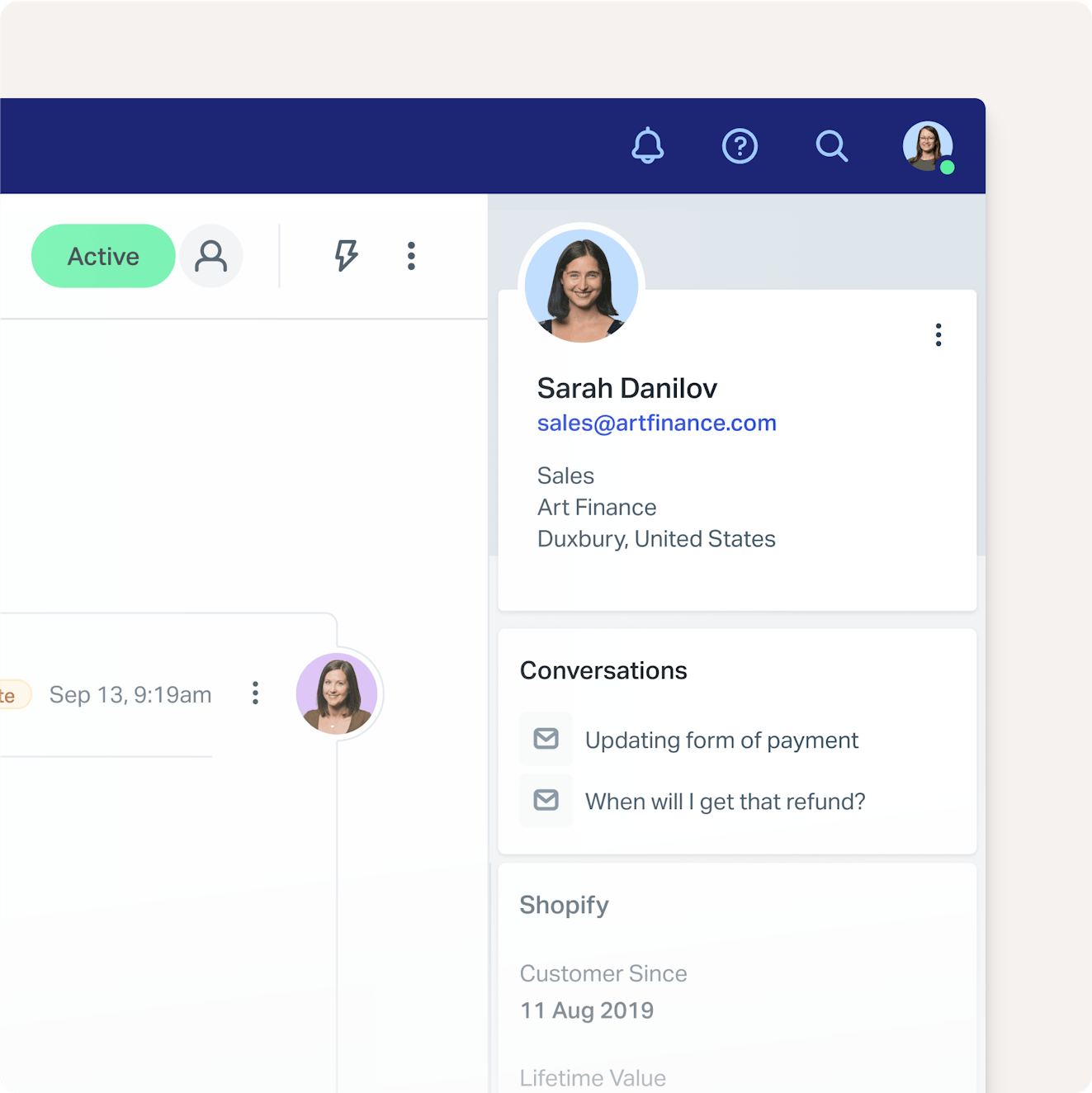
With the full context readily available to them, your team can give a much more personalized and useful reply without slowing their response times. Plus, no one has to suffer through a back-and-forth email chain of you asking for account information.
Respond and collaborate as a team in the same space
When you need assistance from another member of your team, you typically have to take that conversation out of your inbox; otherwise, you run the risk of accidentally copying the sender on a message that was intended to be private.
Help Scout's shared inbox solves this problem with private notes and light users. Private notes appear in line with the email text but are only visible to team members, making it easier to collaborate on a response.
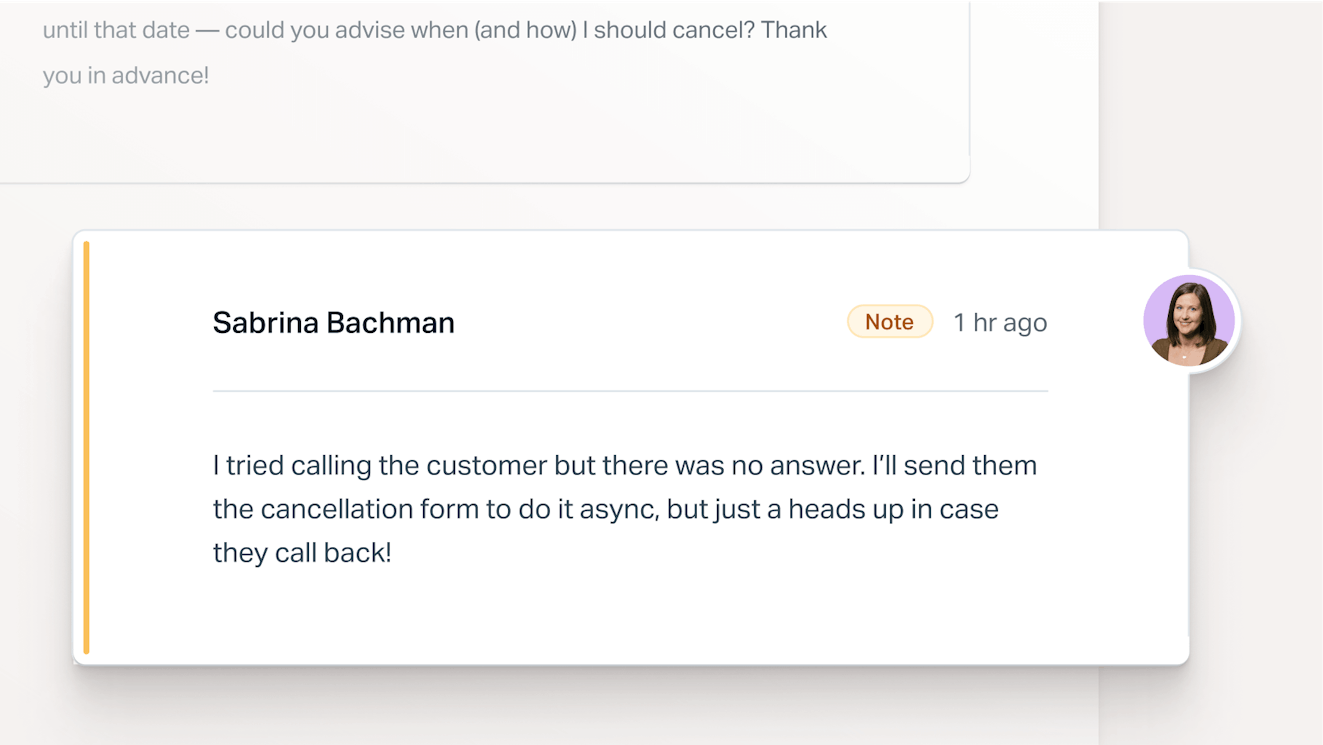
Light users are a type of Help Scout license that allows team members to view and follow conversations and leave private notes without taking up a paid seat in your account. This can be a great option for issues where you may need advice from colleagues in another department.
Stop stepping on each others’ toes
In Help Scout, collision detection indicators enable everyone to see who is working on which issue in real time.
It’s a simple visual notification system:
When you view your email queue in the Inbox, a yellow triangle shows you that another user is viewing a conversation, and a red triangle appears if someone is responding.
When you are viewing a conversation, a user's avatar is highlighted in red when they are writing a response or leaving a private note.
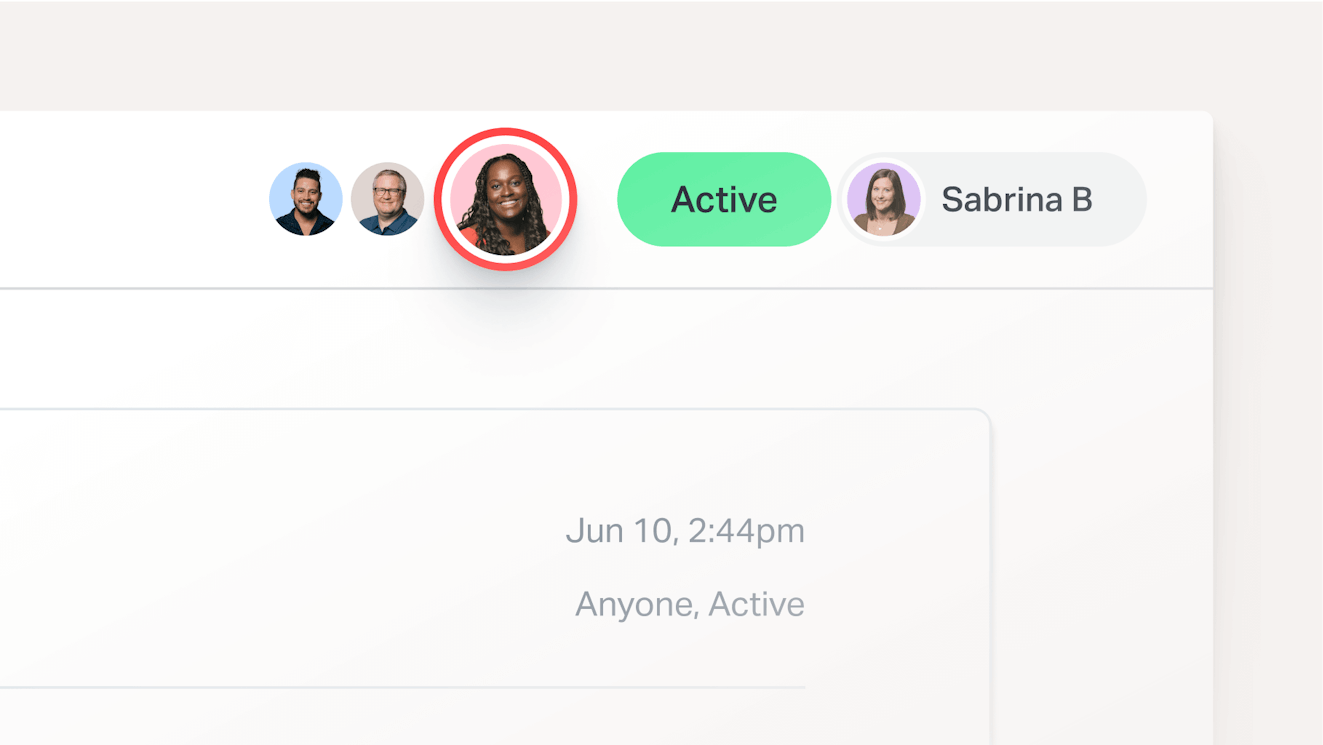
Another great aspect of collision detection is that it doesn’t allow you to send a message if another person replies while you are working on a response. This keeps customers and clients from receiving duplicate replies or conflicting information.
Take and assign ownership of requests
Conversations in Help Scout can be assigned directly to an individual — or handed to the right team — so that it is clear who is responsible for providing a response.
You can also sort by assignee to ensure that nothing gets dropped in the shuffle if a team member is out for the day or leaves the organization.
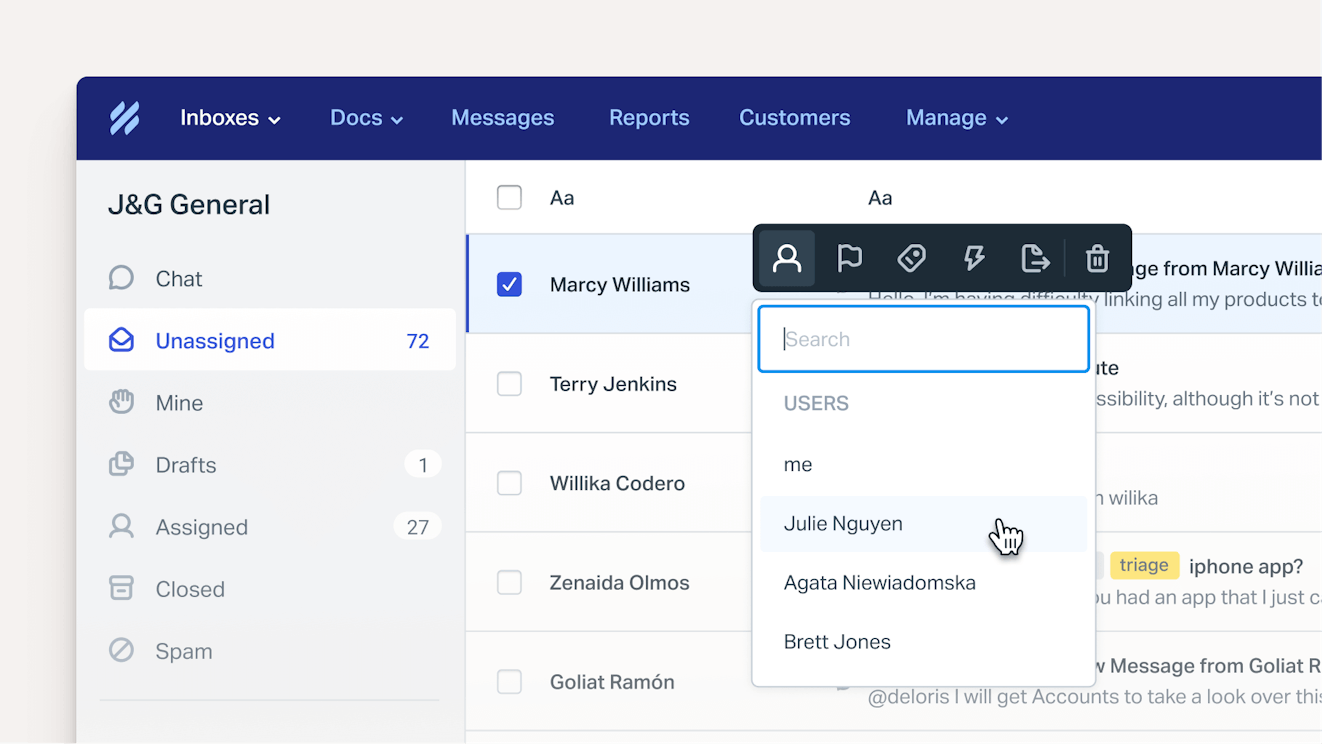
Save time and effort with workflows, tags, saved replies, and AI
Your team members are most valuable when they’re spending time understanding problems and solving them — not when they’re clicking around in a messy inbox sorting emails.
Use Help Scout to apply tags and create workflows to automate common tasks. For example:
Automatically assign billing issues to the finance team.
Identify urgent issues and raise their priorities.
Give your product team an easy way to review customer feedback on particular issues.

As trends emerge, you can build a library of saved replies. These are email templates that will help save you the trouble of having to type the same responses over and over. Help Scout also has AI features to help you deliver better responses more quickly.
AI summarize can create a succinct summary of any conversation with a single click of a button. Use it to quickly get up to speed on pressing issues
AI assist is another tool offered in all Help Scout editors (Inbox, Docs, and Messages). It can adjust the length and tone of your responses, correct spelling and grammar mistakes, and even translate a reply into languages like Spanish, Chinese, French, and more.
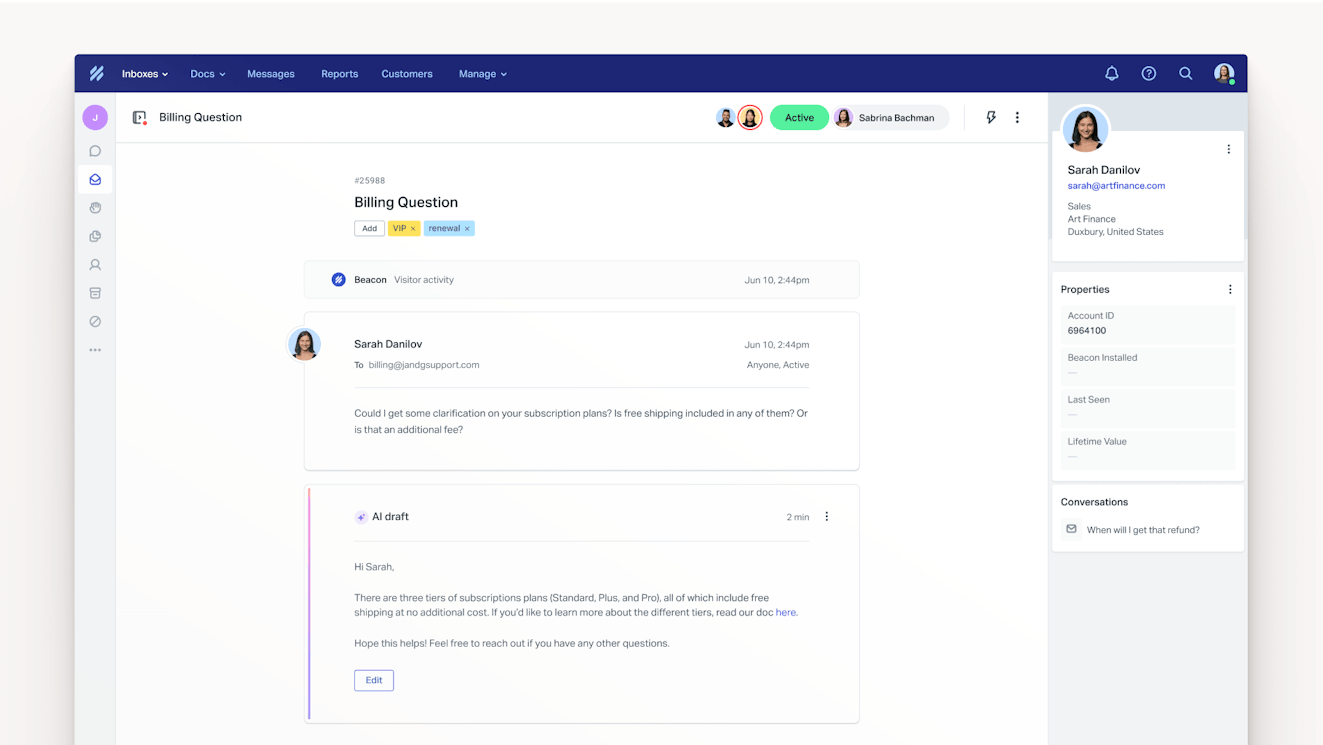
You can also give your team a head start on every response using AI drafts, a writing assistant that creates an initial draft for incoming messages based on information from previous conversations and information in your knowledge base. With AI drafts, all you need to do is review the draft, make any necessary edits, and hit send.
Use your support conversations to create a better organization
Help Scout’s reporting tools help you turn a stream of conversations into usable insights. Understand your customers, clients, students, or patients better than ever by answering questions like:
When do most people need help, and how responsive are you during those times?
Which support channels do people want to use, and how is that changing over time?
What do people think about a new feature or service, and what language do they use to describe it?
Which types of questions are you best at answering, and which are associated with lower satisfaction?

Provide more than just email support
A shared inbox is just one of the tools your team gets access to when you sign up for a Help Scout plan. You can also use Help Scout to create a knowledge base, offer live chat support, and send visitors proactive messages or microsurveys while they're browsing your website.
If your organization offers phone support, you can use Help Scout's integrations to funnel those conversations into the system. Your team can prioritize and work more efficiently with everything in a central location.
Price: Free trial available. Plans start at $20/user per month.
Learn more about Help Scout:
2. Outlook shared mailbox
Best shared inbox software for very small teams that are already using Outlook.
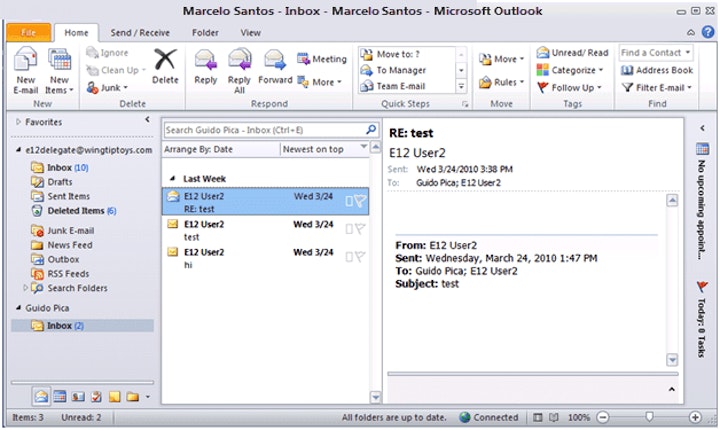
If your team is using Outlook and needs basic shared inbox functionality, creating a shared mailbox in Outlook may be a good choice. Essentially, it’s an email folder you can invite multiple people to use.
Since it’s not really a tool built for scale, it doesn’t have many bells and whistles. Still, for teams already using Outlook, it doesn’t come at an additional cost.
Price: Free for Microsoft 365 users. Microsoft 365 business plans start at $6/user per month.
3. Google Collaborative Inbox
Best shared inbox software for very small teams that are already using Google Workspace.

Very similar to Outlook's shared mailbox, a Google Collaborative Inbox lets teams set up a shared mailbox associated with a Google Group.
Collaborative Inbox has a few more features than Outlook, such as being able to assign emails to specific employees and set email statuses. While not as powerful as other options on this list, it doesn’t cost anything additional, so it can be a good option for small teams.
Price: Free for Google Workspace users. Google Workspace business plans start at $6/user per month.
4. Groove
Best shared inbox software for smaller support teams.
If you’re looking for a good all-around support product for small teams, Groove is a solid choice. It has an easy-to-use, accessible shared inbox with collaboration tools like conversation assignments, internal comments, mentions, and email templates. It also has some AI features to help summarize email threads and provide writing assistance.
For teams ready to move beyond email support, Groove also offers live chat and knowledge base products, which can be helpful for offering real time and self-service support options to your customers.
The platform’s pricing plans are competitive but missing some key features offered by its competitors. For instance, Groove doesn’t have a proactive messaging product, which can be an important tool for support and marketing teams. The platform’s integration partners are also limited.
Price: Free trial available. Plans start at $12/user per month.
5. Hiver
Best shared inbox software for teams that want to use Gmail.
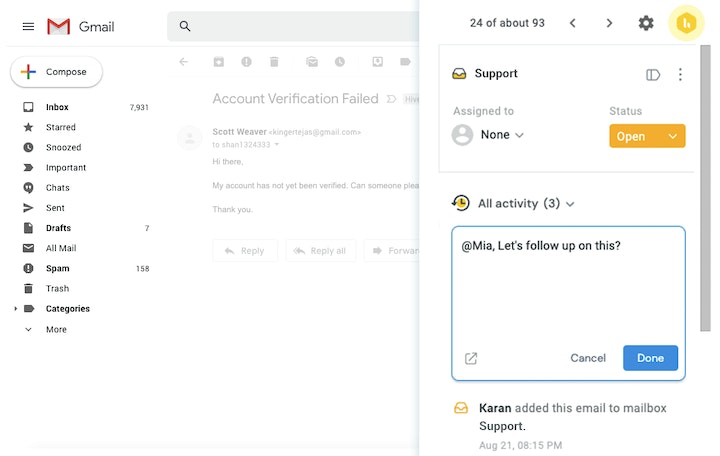
Another option for teams using Gmail is Hiver. Hiver acts as an add-on to Gmail to make it more robust. The extension allows Hiver subscribers to not only manage email via a shared inbox but to also branch into other channels like live chat and a knowledge base.
With Hiver’s shared inbox, you can assign emails to specific people either manually or via round-robin auto-assignment. Other inbox features include private notes, collision detection, shared drafts, and the ability to tag conversations and create rule-based automations.
The software offers analytics for tracking your productivity as well as more advanced features like AI tools and rule-based chatbots, but it should be noted that many of the more advanced features are only offered on higher-cost plans.
Price: Free trial available. Plans start at $15/user per month.
6. Front
Best shared inbox software for personal email use.
Most shared inbox tools are used to manage a group email address (info@, etc.). However, if your team wants to use both personal and shared email addresses when responding to messages, Front could be a great option.
Front offers both personal and team email management features. Some of the collaborative features include internal comments, shared drafts, canned responses, and internal discussions.
The platform supports live chat, a knowledge base builder, and integrations with third-party tools. It also has more advanced features like analytics, automation, AI features, and CRM integration on its higher-tier plans.
Price: Free trial available. Plans start at $19/person per month.
7. Helpwise
Best shared inbox software for social media messaging.
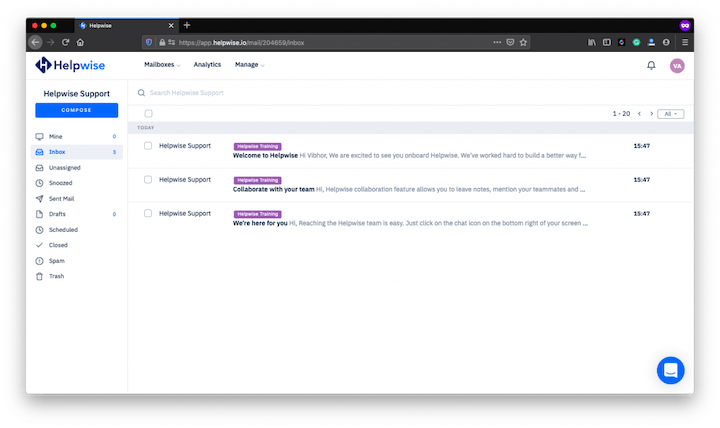
For teams that provide support through phone messages like SMS or WhatsApp and social sites like X (Twitter) and Facebook, Helpwise could be a great team inbox option.
In addition to offering email and live chat channels, Helpwise connects with messaging and social platforms, allowing you to manage all of those conversations in one place.
Price: Free trial available. Plans start at $12/user per month.
8. Drag
Best shared inbox software for teams wanting project management capabilities.
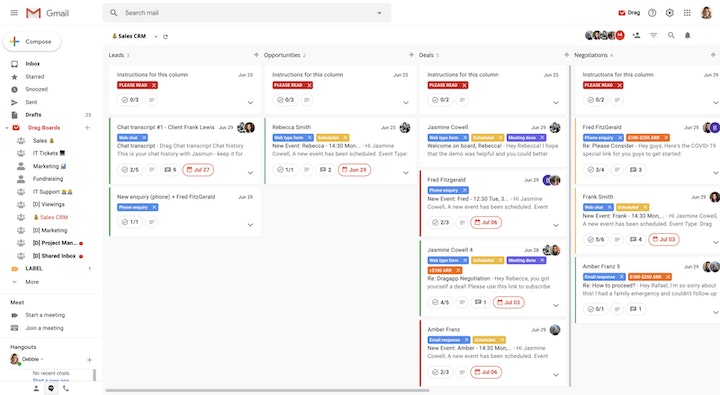
Drag is another option for teams that use Google Workspace. Much like Hiver, Drag is an extension that operates on top of your existing Gmail account. This makes for a gentle learning curve when introducing the platform to your team for the first time.
Drag has all of your standard shared inbox features like email assignments, tagging, @mentions, shared drafts, and collision detection. It also has a team chat feature for easy collaboration with teammates.
The big differentiator for Drag is its project management capabilities. Users can choose between visual kanban boards or list views and easily manage tasks and checklists along with their emails.
Price: Free trial and plan available. Paid plans start at $8/user per month.
9. Zoho TeamInbox
Best shared inbox for Zoho One subscribers.
Zoho is known for its business tools such Zoho Desk and CRM Plus, but it also has an app specifically for those looking for a shared inbox solution. Zoho TeamInbox gives you all of the collaboration tools you need to manage team inboxes including the ability to delegate or follow threads, tag email conversations for better organization, and snooze messages for later follow up.
TeamInbox takes collaboration a step further by allowing you to chat with teammates from within an email thread when you need their input or even draft a message together in real time.
Beyond collaborative features, TeamInbox has rule-based automations to increase productivity, email templates for quicker replies, and for those who like to keep all of their emails in one place, you can manage your personal email on the platform as well.
If you’re interested in giving the tool a try, licenses for TeamInbox can be purchased separately or the app can be accessed as part of the Zoho One suite.
Price: Free trial available. Paid plans start at $5/user per month.
10. HubSpot Service Hub
Best shared inbox software for teams already using HubSpot.
HubSpot is well known for its sales and marketing software, but it also has a product aimed at customer service teams. Service Hub has the basics of what is necessary to manage incoming communications, like a shared inbox and basic reporting capabilities. For those interested in offering chat, they have a live chat product as well.
Teams are often drawn to HubSpot because of the name recognition and the fact that the company offers a free plan. The trouble is that all of the best features for growing teams — automation, user roles, and a knowledge base builder — are only included in the paid plans.
Still, for those who already use HubSpot and would benefit from the integration, Service Hub might be a good option.
Price: Free plan available. Paid plans start at $15/seat per month.
11. Missive
Best shared inbox software for team collaboration.

Missive is another shared inbox tool that allows users to bring all of their business emails — individual and shared accounts — into a single workspace. The unified inbox can handle email, social media messages, and live chat. The platform has a host of features like canned responses, conversation assignments, shared labels, and rule-based automation to make handling contacts easier.
Collaboration-wise, Missive’s collaborative writing, team chat, and workflow functionalities make it simple for teams to work together on requests in real time. The platform also has other excellent features like task management abilities and calendar integrations. However, the lack of a knowledge base builder may be a problem for teams that require a bundled self-service solution.
Price: Free plan available. Paid plans start at $14/user per month.
12. Gmelius
Best shared inbox software for managing email campaigns.

Gmelius is a shared inbox Gmail add-on that includes a number of features like internal notes, shared labels, email assignment capabilities, and reporting. The software also has project management functionality through kanban boards. You’re able to create tasks, add due dates, and assign those tasks to different users.
A key differentiator for Gmelius is its Sequences feature. It allows teams to easily set up multi-stage email campaigns inside of Gmail without having to subscribe to an additional tool.
Price: Free trial available. Plans start at $24/user per month.
Managing email using a shared inbox tool
As you can probably tell from all of the features mentioned above, a dedicated email management platform is the best way to manage communications as a team.
A shared inbox can:
Create accountability: Emails can be assigned to specific team members, ensuring transparency and that everyone knows which messages they are responsible for.
Promote collaboration: Shared inbox platforms allow you to tag and leave notes for other employees when their help is needed to resolve a request.
Increase organization and productivity: Shared inboxes typically have features like tags and custom fields that can help keep communications organized, and they often have automation features to help with repetitive tasks.
Improve security: Each user has their own login information, keeping access to your inbox safe and secure.
Quantify your efforts: Shared inboxes come with reporting and analytics capabilities, giving insights into your team’s performance.
Streamline your work by upgrading to a shared team inbox
If your team is running into issues with efficiency, is working over each other when trying to collaborate, or needs more sophisticated reporting tools to keep track of their work, it's probably time to upgrade to a team inbox tool like the ones listed above.
A shared inbox will go a long way toward ensuring that your customers and clients receive quality support from your team and that your team has the right tools to get the job done.
Learn more about Help Scout:
Did you know that we also have this guide available in French and German?






